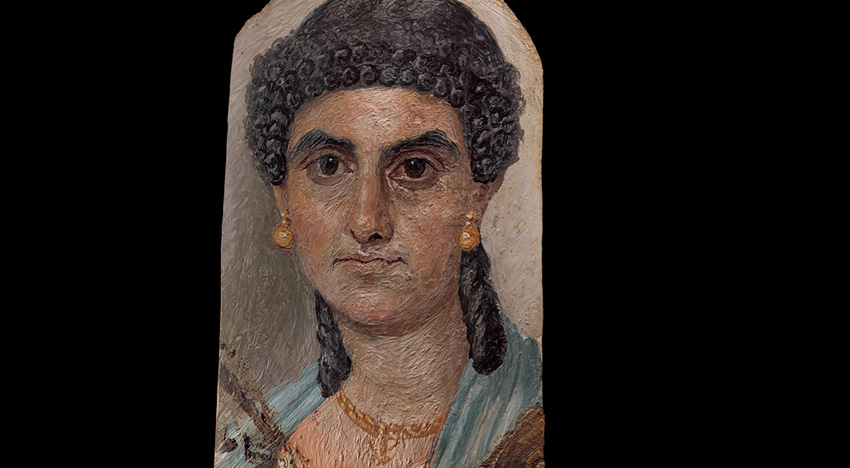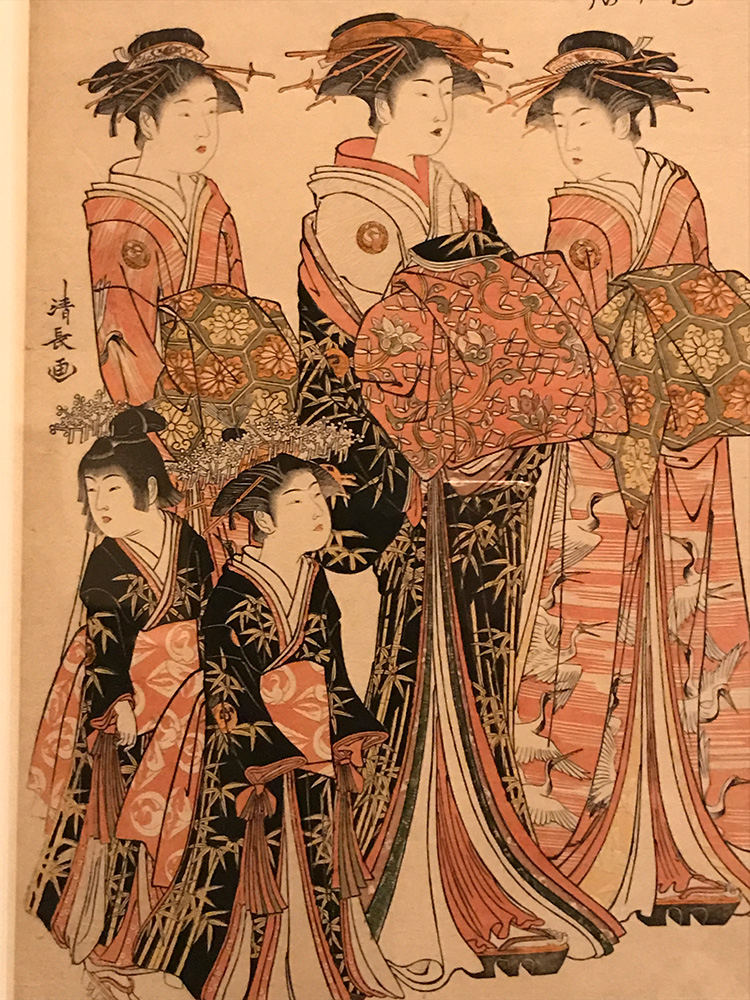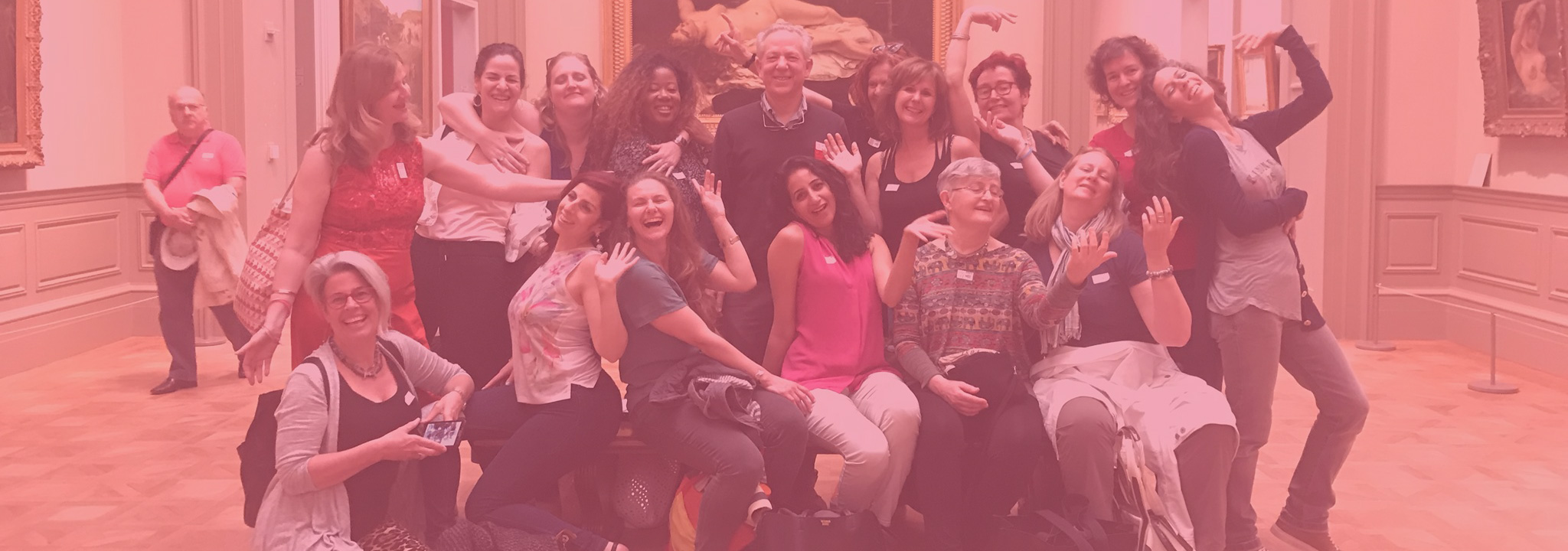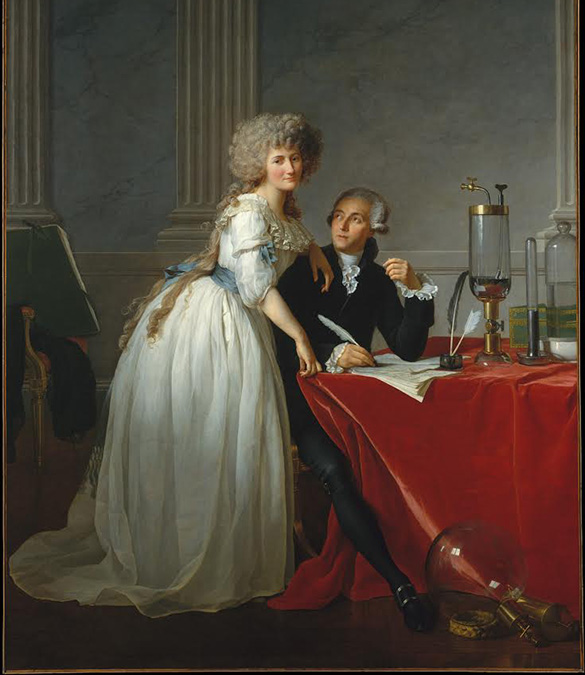
14 Dec Fashion History in Art
We have been giving fashion history tours at the Metropolitan Museum for several months now, and the more we work on them, the more we see that fashion history is probably the biggest theme in the entire museum. If you think about it, you might think thathttps://shadyladiestours.com/fashion-and-beauty-tour/beauty—human beauty—is the biggest theme in the art history. But if you look carefully at the beautiful people in the museum, you will see that (aside perhaps from the Greek male nudes), the person’s features are only a secondary aspect of the images. It isn’t their natural beauty that makes people beautiful in art. Instead, the artworks focus on many other aspects of the beautiful person: on hairdos and make-up and jewelry and clothing and accessories and shoes. In short, human beauty in art consists not of beautiful features, but of costume or fashion.
You can see this all the way back to Roman art. This woman (portrayed on a mummy cover from Egypt, in the time when Egypt was a Roman province) is a particularly good example. She stares out at us with a mournful expression, presumably saddened by her own death (or made sad by the artist to elicit a sad response from the viewer). But she is gorgeously outfitted. Today people generally think of the Greeks and Romans as dressed in white; this illusion derives partly from the conventions of Classical art, and partly from the decay that has bleached ancient statues. In this portrait, however, we see the woman wearing a light blue mantle over her white robe (chiton in Greek). She has impressively heavy gold earrings and a double gold chain with an amulet hanging from it. It is possible that her eyes seem so large because she has kohl (what we would call eye-liner) smeared beneath them. But certainly the crowning glory of her get-up is her elaborate hairdo, with 2 rows of corkscrew curls forming a kind of circlet above her forehead, and a third row of looser curls making a transition to the simple parted hair above—plus elaborate long curled tresses hanging behind each ear.
What is interesting here is that this elaborate hairdo is not just part of a regional or cultural costume, but specifically part of a fashion, as we use the term in reference to the modern world: it was the personal style of the Emperor Nero’s mother, Agrippina, that spread through the elite of the whole empire. Amazing to see it as far away as Egypt!

In fact, you see almost nothing of the courtesans‘ natural appearance (except perhaps for a hint of the nape of the neck—considered highly erotic in Japanese culture). Instead, what you see is her costume: her beautiful kimono (with bamboo branches on the central courtesan’s and cranes on the two others), her huge and elegant obi (sash), her very elaborate hairdo—a forest of pins and combs—her mask-like white make-up, and her high clogs. Her beauty consists of her outfit, and the role that it implies.
And of course these same principles of fashion history apply in the modern West. Almost any portrait of a woman from before 1900 would work as an example, but I’ll use this double portrait of the father of chemistry, Antoine Lavoisier, and his wife (also a scientist!) Marie Anne Pierrette Paulze by Napoleon’s favorite portrait-painter, Jacques-Louis David. We could talk about Monsieur Lavoisier, but I’m going to concentrate, as David does, on Madame—who gazes calmly out of the portrait at us, while Lavoisier looks up to her as if needing her approval. Indeed, you might argue that David and Lavoisier together treat her as a kind of Muse, a marvel who dominates them and the scene. But what really catches the eye about her? Her face? Perhaps her expression. But principally, her presence is made up of her gown (and the undergarments that give it is shape) vast white muslin gown and her elaborate hairdo. Her ‘body’ (by which I mean the body that we see) is the opposite of the Japanese courtesans: her corset and the bum-roll attached to her behind give her a hugely exaggerated version of a woman’s body, emphasized by the vast amount of pure white cotton muslin of which her gown is made (and of course the blue silk sash that emphasizes her corseted waist. Her hairstyle instead has something in common with the Japanese courtesan’s, at least in its extreme elaboration. She doesn’t wear combs and pins, though; instead, she wears a huge powdered wig, with tresses of her own blond hair streaming behind.
In short, we have three different beautiful women from three different cultures, as far apart in time and space as they could possibly be. But in every case, their beauty consists principally of what they are wearing or how they have been coiffed, made up, etc. In short, beauty in art consists of fashion, and fashion history is one of the biggest, if not the biggest, theme in art history. Sometimes I think I should suggest to the Metropolitan that they change the museum’s name to The Metropolitan Museum of Art and Fashion History. But since I doubt they would agree, I can only suggest you come on my Fashion and Beauty tour some time, to find out more!




